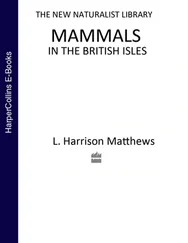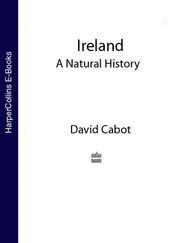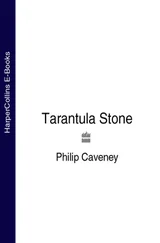The New Naturalist Library
A SURVEY OF BRITISH NATURAL HISTORY
CAVES AND CAVE LIFE
Editors
Max Walters, ScD, VMH
Professor Richard West, ScD, FRS
David Streeter, FIBiol
Sarah A. Corbet
Derek Ratcliffe
The aim of this series is to interest the general reader in the wildlife of Britain by recapturing the enquiring spirit of the old naturalists. The editors believe that the natural pride of the British public in the native flora and fauna, to which must be added concern for their conservation, is best fostered by maintaining a high standard of accuracy combined with clarity of exposition in presenting the results of modern scientific research.
A cave spider Porhomma convexum stalks across the floor of GB Cave on Mendip. Above it, a fungus gnat Speolepta leptogaster hangs in a spreading fungal mycelium. (Philip Chapman)

Copyright
William Collins
An imprint of HarperCollins Publishers Ltd 1 London Bridge Street London SE1 9GF WilliamCollinsBooks.com
This eBook edition published by William Collins in 2018
© Philip Chapman Philip Chapman asserts his moral rights to be identified as the author of this work
A catalogue record for this book is available from the British Library.
All rights reserved under International and Pan-American Copyright Conventions. By payment of the required fees, you have been granted the non-exclusive, non-transferable right to access and read the text of this eBook on-screen. No part of this text may be reproduced, transmitted, downloaded, decompiled, reverse engineered, or stored in or introduced into any information storage and retrieval system, in any form or by any means, whether electronic or mechanical, now known or hereinafter invented, without the express written permission of HarperCollins Publishers.
HarperCollinsPublishers has made every reasonable effort to ensure that any picture content and written content in this ebook has been included or removed in accordance with the contractual and technological constraints in operation at the time of publication .
Source ISBN 9780007308545
Ebook Edition © JANUARY 2019 ISBN: 9780007403974
Version: 2019-01-09
Dedication
Dedicated to the memory of
Dr G.T. ‘Jeff’ Jefferson
a dear colleague and friend
Contents
Cover
Title Page
Copyright
Dedication
Editors’ Preface
1. The Fascination of Caves
The lure of caves
The sporting science
Underground naturalists
2. The Cave Habitat
What is a cave?
What lives in caves?
Caves in Limestone
Types of cave habitat
Food supply
Microclimate
3. Limestone Caves in Britain and Ireland
Karst: the landscape of caves
Caves in Britain and Ireland
Mendip
Pennines
South Wales
Derbyshire’s Peak District
Sligo-Fermanagh
Clare
Other areas
4. Cave Fauna and Flora
The origin and classification of cavernicoles
Life on the threshold
A place of shelter
Waifs and strays
Denizens of darkness
Submariners
5. Cave Communities
The wall association
Terrestrial mud bank community
‘Batellites’
Pool surface associations
Freshwater stream communities
6. Caves Through the Pleistocene
The age of ice
Pleistocene survivors and recent colonists
Troglodytes
7. The Future of Caves
Cave conservation and the caver
External threats to caves, groundwater pollution and public safety
Impact of human activity on cave faunas
Conservation of cave-roosting bats
Limestone quarrying
Acid rain, caves and flue gas desulphurization
Cave SSSIs
Databases
Glossary
Bibliography
Index
Acknowledgements
About the Publisher
Editors’ Preface
To man, caves are the original shelters, sought since Palaeolithic times hundreds of thousands of years ago. To the adventurous amongst us, they are challenges to be explored, dark passages leading to unknown underground palaces and waterways, sometimes of amazing beauty. To the naturalists amongst us, they arouse our interest by their curious and unique life-forms, selected by the restrictive environments, and by their presence in areas of limestone country of outstanding beauty. Yet, as with other life, the plant and animal communities of caves form a cohesive and interacting collection of organisms, from bacteria to mammals, from lower to higher plants, depending on the varied local environments within the cave systems.
Here, then, is an ideal subject for the New Naturalist , taking into account not only the living natural history of caves, but also their origin, habitat characteristics, and what they tell us of past times. Indeed, as well as their living content of caves, the sediments within them are often the graveyard of past denizens of caves, such as the hyaena, as well as the prey of cave carnivores; and, of course, these sediments reveal past habitation by man through the present of bones and tools. So we have a fourth dimension of time to add to the natural history of caves.
It may be thought that cave communities would be one of the few remaining natural ecosystems surviving in the British Isles, protected by difficulty of access. As with other living communities more apparent and better known to us, this is not the case; they are perhaps more fragile than above ground communities, more easily disturbed and affected by man’s activities. To the natural historian the subject of caves demands a broad multidisciplinary approach. Dr Chapman has extensive experience of the many aspects of cave natural history. He has been able to integrate this variety, dealing with the essential geological and geomorphological background, the historical theme, and the natural history of caves, so presenting the naturalist with an outstanding and cohesive account of a unique and extraordinary ecosystem of wide interest.
1
The Fascination of Caves
The lure of caves
There is a curious fascination about caves that seems to affect people of all ages and all cultures. Even as children, we have a kind of longing for caves, seeing them perhaps as a place of safety, but equally as a source of adventure and excitement – a gateway to the unknown.
Our remote ancestors used the entrances of caves as habitations, but reserved their depths as hiding places for their most precious and powerful secrets – the painted, magical symbols which would ensure a continuing supply of game for hunting, and the earthly remains of their dead. Religion was born in caves, and even now the buildings of our Christian cultures retain atavisms of those earlier forms of worship; under the central part of the church lies the crypt, secret and dark – originally the burial place of saints and martyrs. It is perhaps also significant that the Mother of God should have appeared to Bernadette in a grotto at Lourdes, and should have consecrated the cave spring which welled up from underground.
In Japanese mythology the sun-goddess Amaterasu retreated at night to a cave, plunging the world into darkness. The ancient Greeks too gave prominence to caves in their mythology. Zeus, chief of Gods, was born in a cave, and of course the Greek hell lay below ground, and at its gates Charon the ferryman waited in his boat to row the souls of the departed across the black waters of the River Styx into a land of grief and eternal pain. In our own mythology, King Arthur, his knights and hounds are said to slumber still beneath a Welsh mountain, eternally awaiting the call to battle. Even today in parts of New Guinea, tribesmen will say that their ancestors were born directly from the earth through the womb-like opening of a cave.
Читать дальше













